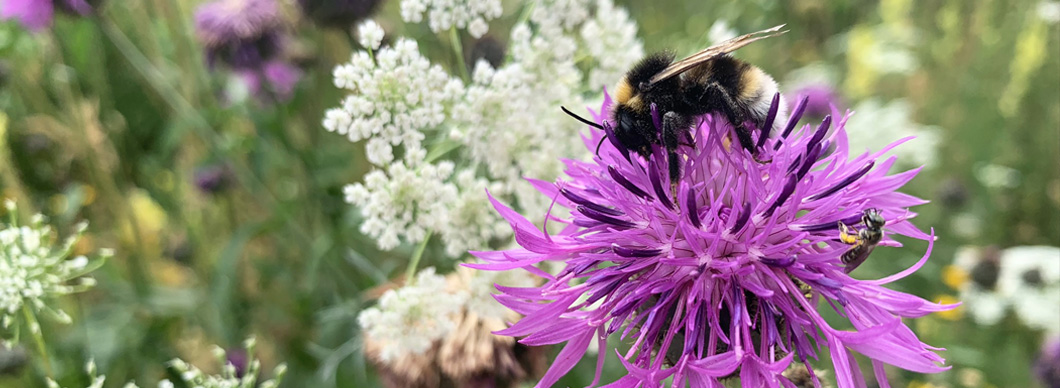It is somewhat my fault that Corney & Barrow are members of the Bumblebee Conservation Trust. As a volunteer ambassador for the science-based educational charity, I cannot help but enthuse about bees and encourage people to do their bit – as a result of a few enthusiastic pitches, C&B agreed that there was some synergy with the Trust and our green aspirations, and here we are.
You may or may not be aware that Corney & Barrow’s London office is a stone’s throw from the Tower of London. I must say, I still sometimes marvel at the juxtaposition of it and the adjacent Tower Bridge, amongst the more modern buildings in the skyline such as the ‘Walkie Talkie’ and the ‘Shard’. If you have visited the Tower of London in recent years, you may have noticed that C&B’s neighbours have been ‘up to something’ in the moat. I was given the opportunity to discover what…
I was fortunate enough to have been invited to represent the Bumblebee Conservation Trust at a slightly more unusual guided tour – rather than being taken around the historic buildings and exhibitions, we had an afternoon in the moat. I vividly recall a few years ago, when the poppy installation draped over the wall and into the moat; it was a breathtaking and humbling sight, and it made me look more at the moat itself, which was a plain grassy area, sometimes used for demonstrations and reenactments. I certainly didn’t imagine that future-me would get to walk down there, excitedly looking for bees. The gathering spot was near the Wharfinger’s Cottage and I couldn’t resist grabbing a pic in front of the small but perfectly formed garden because even that was buzzing with activity. A promising start to the afternoon!
As we are reminded on a placard on-site, since the Second World War, we have suffered from a drastic decline in biodiversity and habitat loss. During the war, the moat was repurposed into vegetable plots, so looking at the space in a different way is not new. Before it was drained, the moat was a thriving wetland habitat, full of many species of water-loving plants. Archaeological digs have found seeds and pollen which give us a picture of what used to grow in the moat, and there is a hope that some of these plants can be reintroduced.

The moat’s make-over began with the ‘Superbloom’ project in 2022, in which over 20 million seeds were sown to celebrate the Platinum Jubilee. The initial mix was colour-focussed, inspired by the Queen’s 1953 coronation gown and “designed to attract pollinators, insects and seed-eating birds, evolving over the summer”. Well, attract pollinators it certainly did – we encountered a few types of bumblebee – buff tailed bombus terrestris and the common carder bee bombus pascuorum are featured below, some solitary bees, butterflies, hoverflies, and of course given the number of urban honeybee hives in London, who don’t have the forage to sustain them, we encountered rather a lot of apis mellifera. The current incarnation of the moat is an ‘echo of last year’ – the class of 2022 were allowed to die back naturally and self-seed.
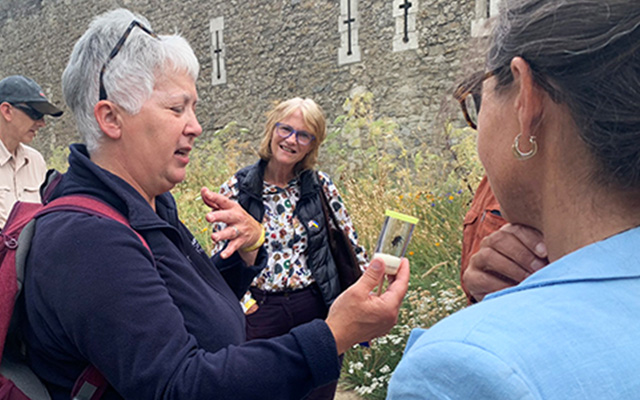
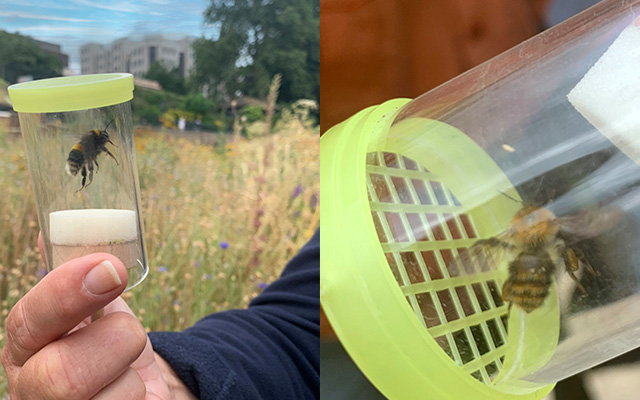
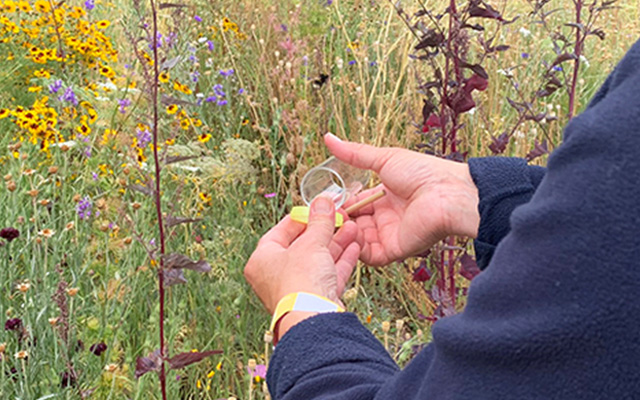
I make no apology for the number of photographs I took (having to select just a handful was painful). The fact is, I was struck by the different sections in the moat – and from what we were told, these were generally unintentional and due to the self-seeding. If you look closely, you’ll see that different flowers make up different sections. Some parts, Ali our wonderful guide explained, proved to be more tricky to grow flowers on than others. In one of the more barren areas last year they had introduced wildflower turf matting, which has since been taken up and a return has been made to hand-seeding. But not every square millimetre needs to be bursting with flowers – some bees will dig into the ground to nest, meaning that ‘bald spots’ do help to support biodiversity. The moat is on a journey and despite the impressive display of colour and the clear presence of various pollinators, they aspire to do more, including the recycling of rainwater to support flowering marshes, ponds, and food-related flowers for example. A lot of ongoing ‘science’ is beng done, with testing of soil types, analysis of microclimate, and the team at the Tower working with a number of environmental organisations, including the BBCT to ensure that the future will include appropriate planting.

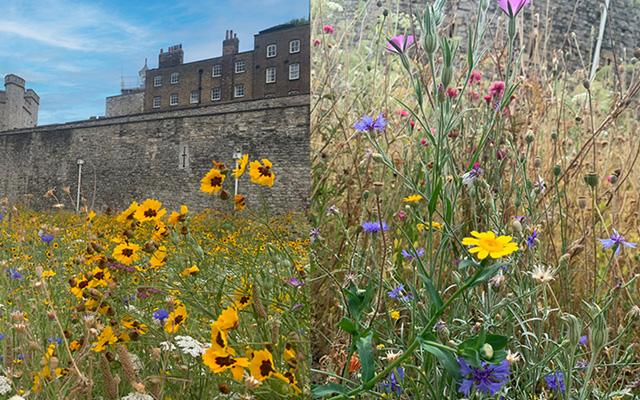
When we visited (mid July), a number of the flowers had already ‘gone over’ – look at all those wonderful seed heads. The last of the poppies were waving gentle farewells to us, their counterparts having flowered and gone to seed over a month ago. But that’s one of the things to remember about planting to support our precious pollinators – we need to ensure there are flowers available across as much of the year as possible. It’s no good having one month where a space looks like a contender at Chelsea Flower Show, and the rest of the year it offers little to our bumblebees. Fortunately, there are tools like the Trust’s ‘Bee Kind’ website, which is great for assessing what you have planted, and helping you to fill in any seasonal gaps. Personally, as I only have a small space to work with at home, I have a penchant for the ‘Super Plants’, which give me the most ‘bang for my buck’.
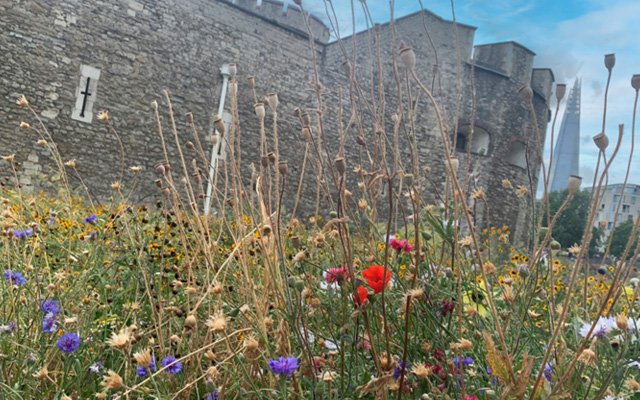
And I’d have to say, it’s not just about planting flowers for forage purposes – whenever I see ‘Lamb’s Ear’ stachys byzantine I make a bee-line for it and eagerly seek out any wool carder bees anthidium manicatum. I found it in a couple of locations in the moat and I was not disappointed. This solitary bee scrapes the ‘fluff’ from the leaves and makes little balls of it, hence the common name. You might also want to look at planting flowers and grasses that will provide shelter for insects once they have gone over.
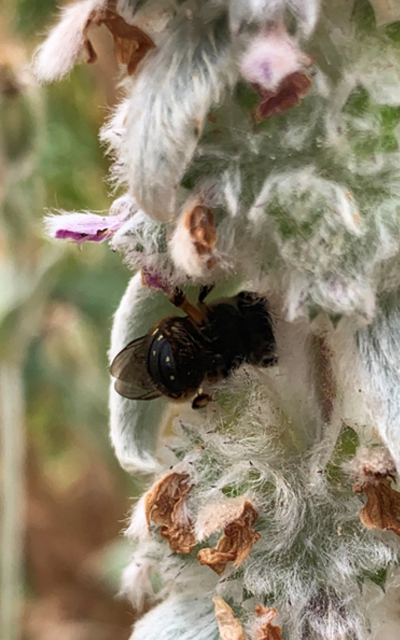
The moat is open to the public as part of the entry to the Tower of London – what is suggested as a 20-minute walk took our group of bee enthusiasts nearly 2 hours. The key point we took from the visit, was that C&B’s neighbours at the Tower of London, like us, are on a journey. They are trying things, learning from them, and following the science. I very much look forward to watching how the moat develops year on year and hope I will be invited back to report on the progress. It is exciting stuff!
Katrina Thuis

